Pterosaur fossils discovered in Arizona's Petrified Forest National Park
Tucked away in a remote bonebed in Arizona's Petrified Forest National Park laid hundreds of fossils, including a fragile jawbone belonging to one of the oldest-known flying reptiles: the pterosaur.
The discovery of the oldest flying vertebrate in North America by a group of researchers fills a gap in the fossil record proving that pterosaurs coexisted with frogs, turtles and older groups of animals like giant amphibians.
The recently discovered fossils date back to the late Triassic period – about 209 million years ago, scientists said. The discovery of at least 16 vertebrate species includes seven previously unknown species.
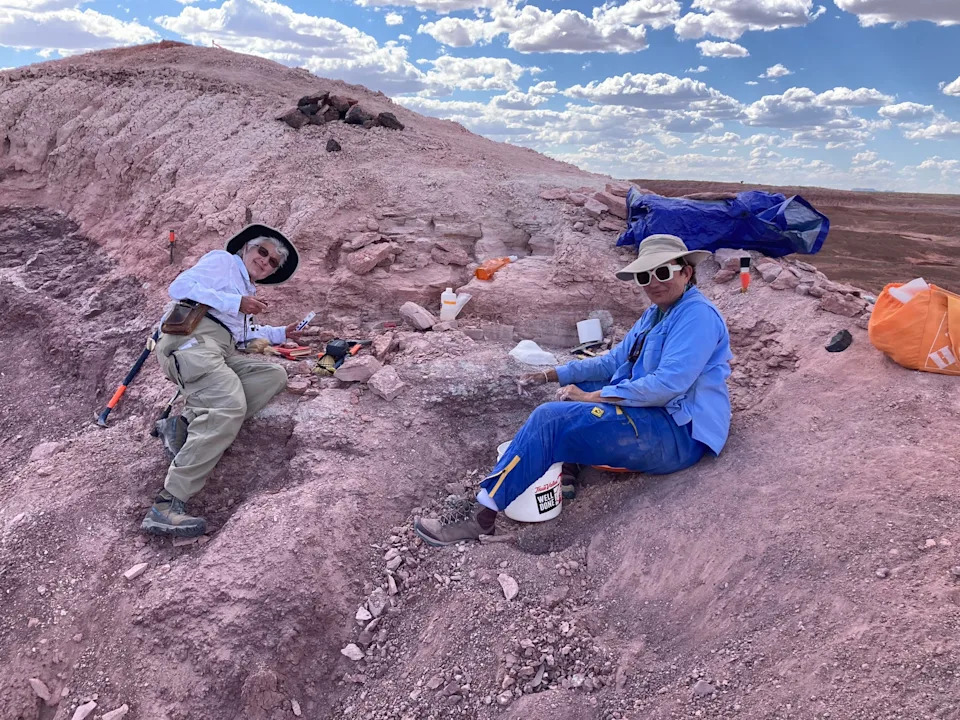 Kay Behrensmeyer (left), curator of vertebrate paleontology at the Smithsonian’s National Museum of Natural History, with Robin Whatley (right), professor and associate dean at Columbia College Chicago, in Petrified Forest National Park digging for fossils in a quarry in 2023.
Kay Behrensmeyer (left), curator of vertebrate paleontology at the Smithsonian’s National Museum of Natural History, with Robin Whatley (right), professor and associate dean at Columbia College Chicago, in Petrified Forest National Park digging for fossils in a quarry in 2023.Paleontologist Ben Kligman of the Smithsonian Institution's National Museum of Natural History led the study published in the journalProceedings of the National Academy of Sciences. Kligman told USA TODAY the initial motivation of this field work was to find layers of rock that might preserve early mammal fossils.
"As so often happens in the field of paleontology: you go looking for one thing and you find something totally different." said Kligman.
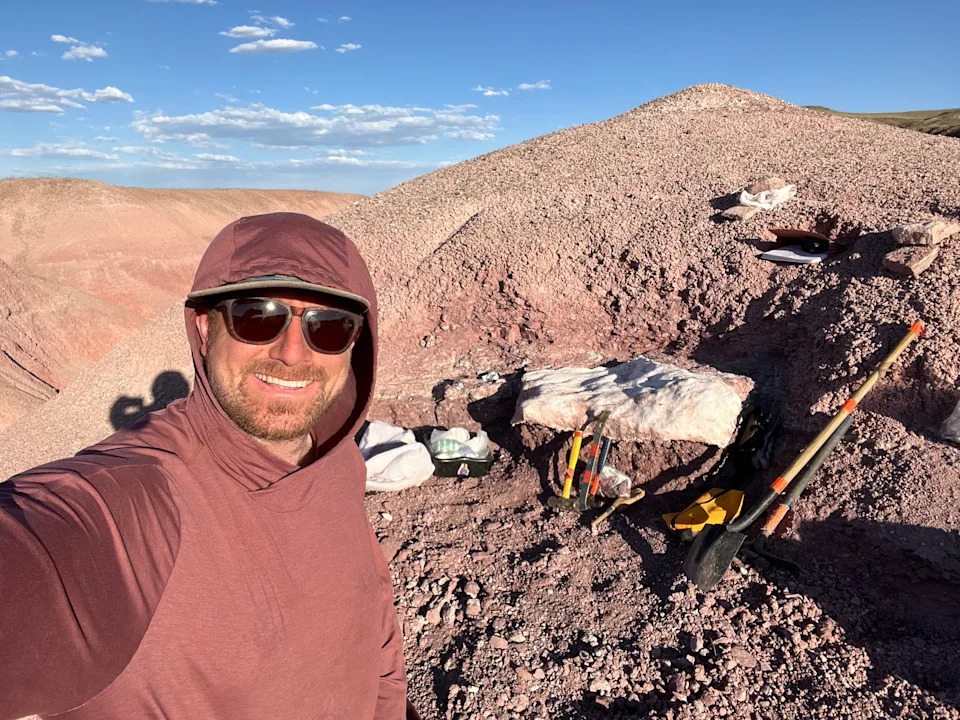 Ben Kligman, a Peter Buck Postdoctoral Fellow paleontologist at the Smithsonian’s National Museum of Natural History, quarrying a bonebed in Arizona’s Petrified Forest National Park.
Ben Kligman, a Peter Buck Postdoctoral Fellow paleontologist at the Smithsonian’s National Museum of Natural History, quarrying a bonebed in Arizona’s Petrified Forest National Park.These fossils, which date back to the late Triassic period, provide a snapshot in time of a once dynamic ecosystem of different species living together. The fossil site is also key for understanding the evolutionary origins of both turtles and pterosaurs, Kligman added.
"The site captures the transition to more modern terrestrial vertebrate communities where we start seeing groups that thrive later in the Mesozoic living alongside these older animals that don’t make it past the Triassic," according to Kligman.
Where was the pterosaur discovered?
The Petrified Forest National Park in Northeast Arizona is known for producing fossils of plants and animals from the Triassic time period, Reuters reported. Remains of the pterosaur along with primitive frogs, lizard-like reptiles and one of the oldest-known turtles were all discovered in the national park.
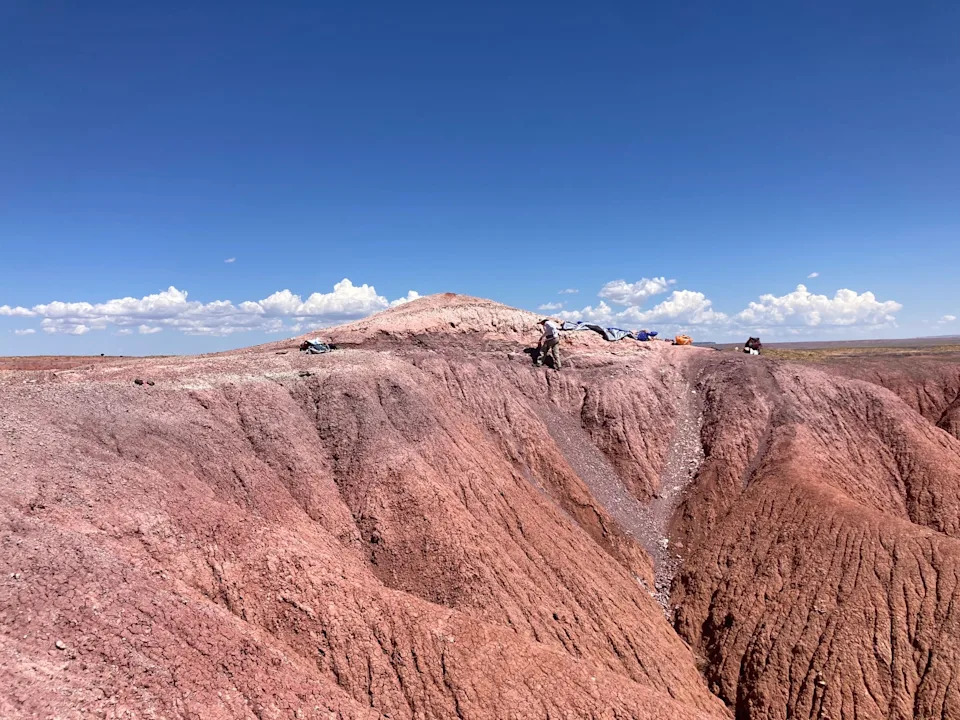 Kay Behrensmeyer curator of vertebrate paleontology at the Smithsonian’s National Museum of Natural History, in Petrified Forest National Park documenting the geology of a bonebed in 2023.
Kay Behrensmeyer curator of vertebrate paleontology at the Smithsonian’s National Museum of Natural History, in Petrified Forest National Park documenting the geology of a bonebed in 2023.Pterosaurs were the first vertebrates to achieve powered flight, followed much later bybirdsandbats, Reuters reported. The oldest-known fossils of these seagull-sized reptiles were found in Europe and date back to around 215 million years, researchers said. But pterosaurs are thought to have appeared even further back – roughly 230 million years ago, around the same time as the earliestdinosaurs.
The newly identified pterosaur – Eotephradactylus mcintire – is named after Suzanne McIntire, who discovered the fossil after it has been brought to Smithsonian'sFossiLab along with 1,200 other individual fossils.
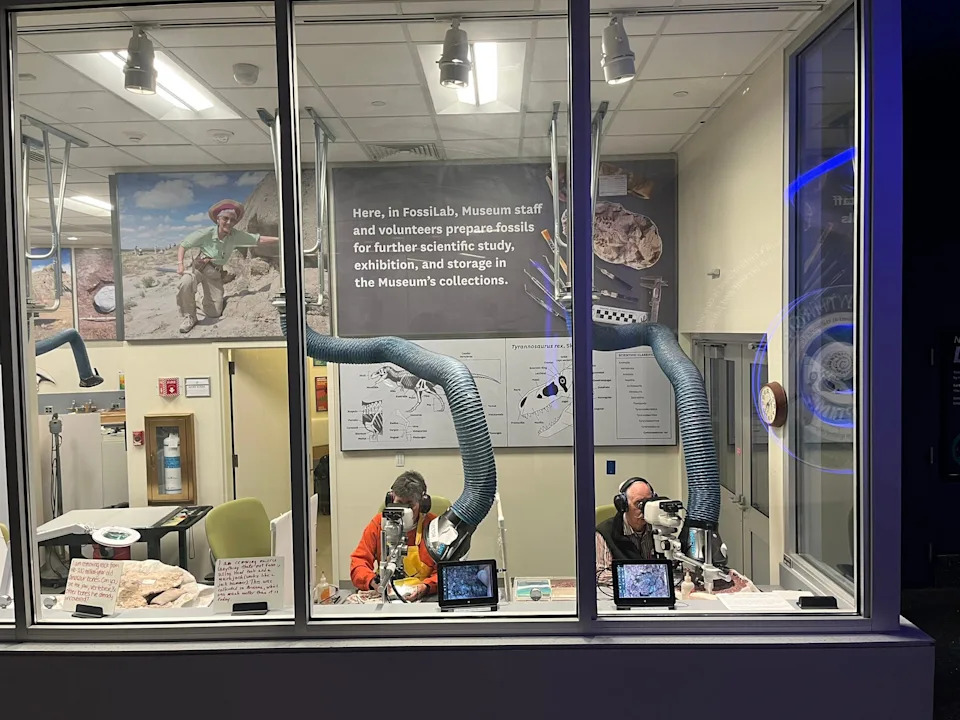 Volunteers working on fossils from a Petrified Forest National Park bonebed in the FossiLab on view to museumgoers in the David H. Koch Hall of Fossils–Deep Time at the Smithsonian's National Museum of Natural History
Volunteers working on fossils from a Petrified Forest National Park bonebed in the FossiLab on view to museumgoers in the David H. Koch Hall of Fossils–Deep Time at the Smithsonian's National Museum of Natural History"What was exciting about uncovering this specimen was that the teeth were still in the bone, so I knew the animal would be much easier to identify," McIntire said in a statement.
The name means 'ash-winged dawn goddess,' and refers to the fossil site’s volcanic ash and the animals’ position near the base of the pterosaur evolutionary tree, according to a statement from the Smithsonian’s National Museum of Natural History.
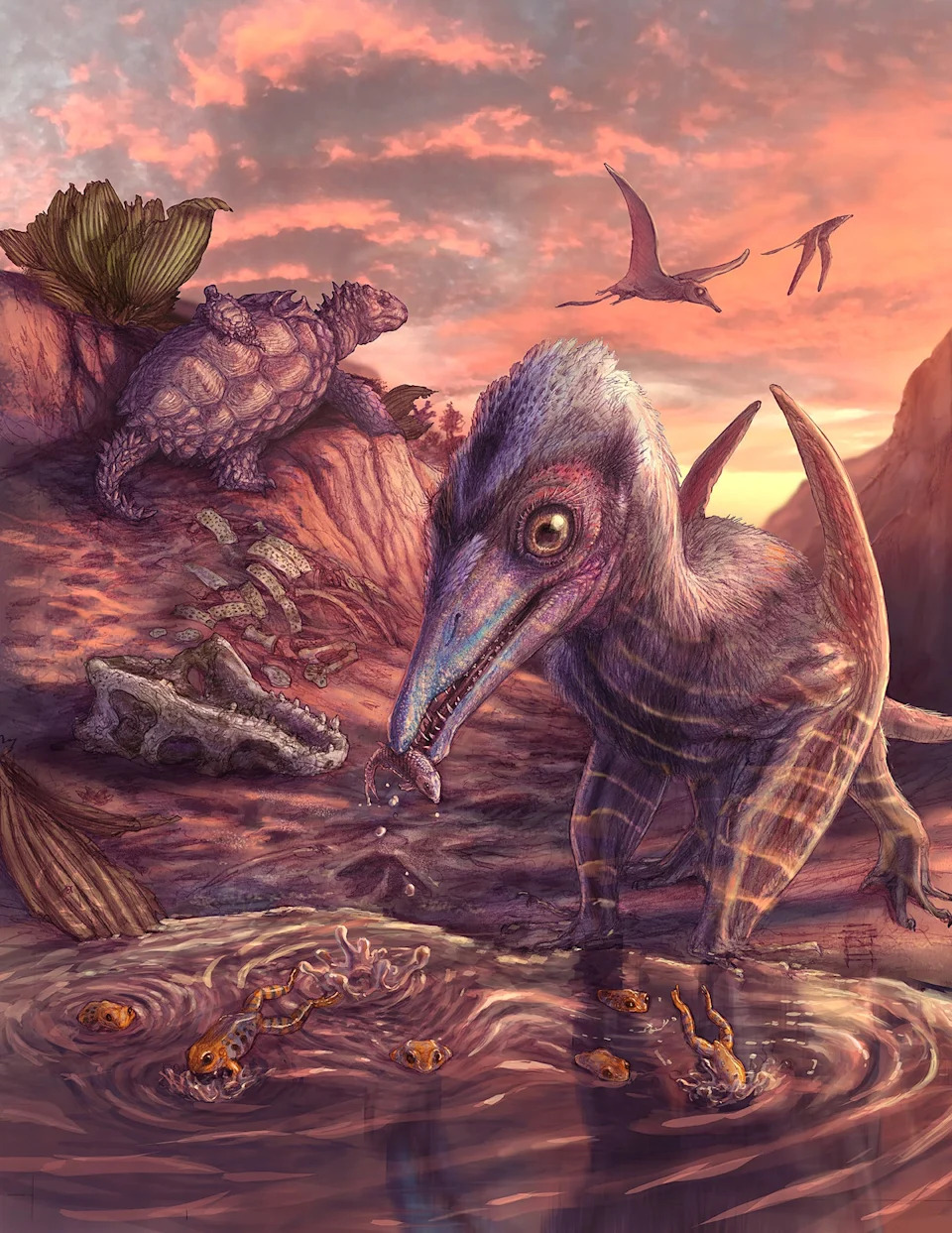 Reconstructed by an artist, the fossilized landscape, plants and animals were discovered preserved in a remote bonebed in Arizona's Petrified Forest National Park.
Reconstructed by an artist, the fossilized landscape, plants and animals were discovered preserved in a remote bonebed in Arizona's Petrified Forest National Park.The Triassic era came on the heels of Earth's biggest mass extinction 252 million years ago, and then ended with another mass extinction 201 million years ago that wiped out many of the major competitors to thedinosaurs, according to Reuters.
While frogs and turtles are still around today, pterosaurs dominated the skies until theasteroid impact66 million years ago that ended theageofdinosaurs, Reuters reported.
How large was the pterosaur?
The pterosaur's wingspan was about three feet and its skull was about four inches long. It had curved fangs at the front of its mouth for grabbing fish as it flew over rivers, and blade-like teeth in the back of the jaw for slicing prey, Reuters reported.
The researchers said Eotephradactylus would have had a tail, as all theearlypterosaurs did.
Contributing: Will Dunham, Reuters
This article originally appeared on USA TODAY: Fossils of North America's oldest known flying reptile discovered














